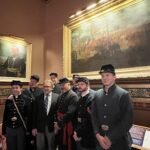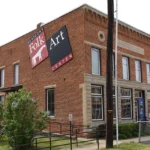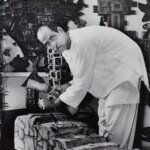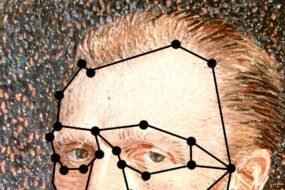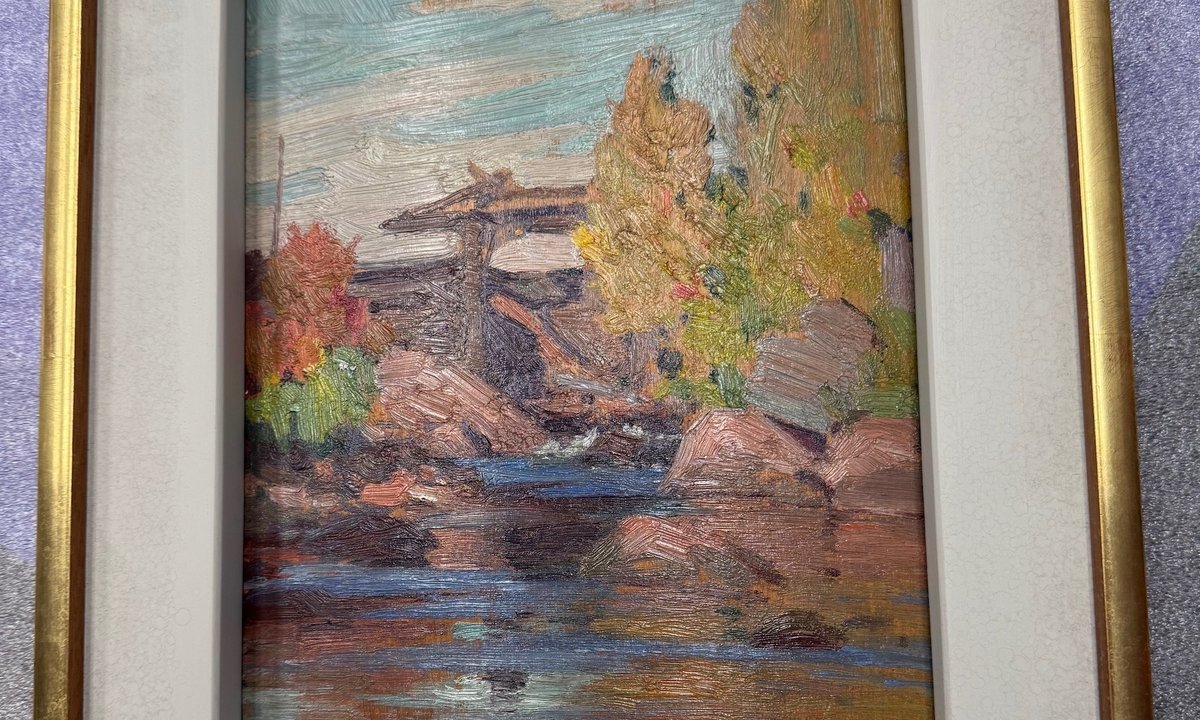
In a mystery worthy of Tom Thomson himself—the famed Canadian painter who drowned at age 39 in unusual circumstances that have fuelled wide-ranging theories—one of his paintings has been returned to its owner four years after it vanished.
An unsigned and untitled Thomson painting of a lake in Algonquin Park, which he originally gifted to his friend Charlie Scrim, was entrusted to Waddington’s Auction House in Toronto in 2015 by Joseph Murray, whose uncle had given it to him in 1977. His uncle, Paul Chandler, worked at Scrim’s Florist in Ottawa for decades and inherited the estate of Charlie Scrim’s sister Flora, which included the painting. Chandler gave it to his nephew as a present when he graduated from medical school at the University of Ottawa.
The 8in by 10in oil-on-wood panel painting from around 1915 had hung in the Murray family home for over 30 years when Murray, who had since moved to Hawaii, decided to sell it. In 2013 it was sent to the Canadian Conservation Institute at the National Gallery of Canada for analysis and authentication, where it was attributed to Thomson. The attribution was partly because of verification that the painting contained a pigment called Freeman’s white, which was only used by Thomson and the Group of Seven painters with whom he was closely associated. Its authenticity, Murray tells The Art Newspaper from his home on Kauai, was also confirmed by the late Thomson expert, art scholar and curator Dennis Reid.
After having the painting restored and appraised, it was picked up by an employee of Waddington’s Auctioneers. In spite of assurances that it was either in storage or awaiting auction, Murray was informed in 2021 that the auction house did not have it. When Murray asked after Stephen Ranger, the employee he had entrusted it to and with whom he says he had exchanged many emails, he was told he no longer worked there. Murray says he hired private investigators to find Ranger, who insisted the painting was at the auction house.
In 2022, Murray filed an C$11m ($8m) lawsuit against Waddington’s. The auction house, he says, insisted that the painting was never in its possession and simultaneously that it was not an original Thomson.
After several years of litigation, Murray learned on 22 April, via his lawyer Steven Bookman, that the painting had been found. Waddington’s did not respond to The Art Newspaper’s requests for comment; all Bookman was told was that the painting had been found in a climate-controlled storage unit.
Although Murray says he welcomed the news of the painting’s recovery, saying “it was like being reunited with a family member”, the question of where the painting was for the past decade remains unanswered and the lawsuit is ongoing.
“Dr Murray has lost the use and enjoyment of his painting for the last ten years,” Bookman, Murray’s lawyer, said in a statement. “Dr Murray has also lost the benefit of the funds that he would have received if his painting had been marketed for him in 2015. While Dr Murray is grateful that his painting has been located after all this time, there are still areas that we will be pursuing for damages”
For now, the painting sits in storage while Murray once again looks for a buyer. He says the work “captures the essence of Ontario wilderness” and hopes its next ownrs appreciates its “incredible spectrum of colour”.



